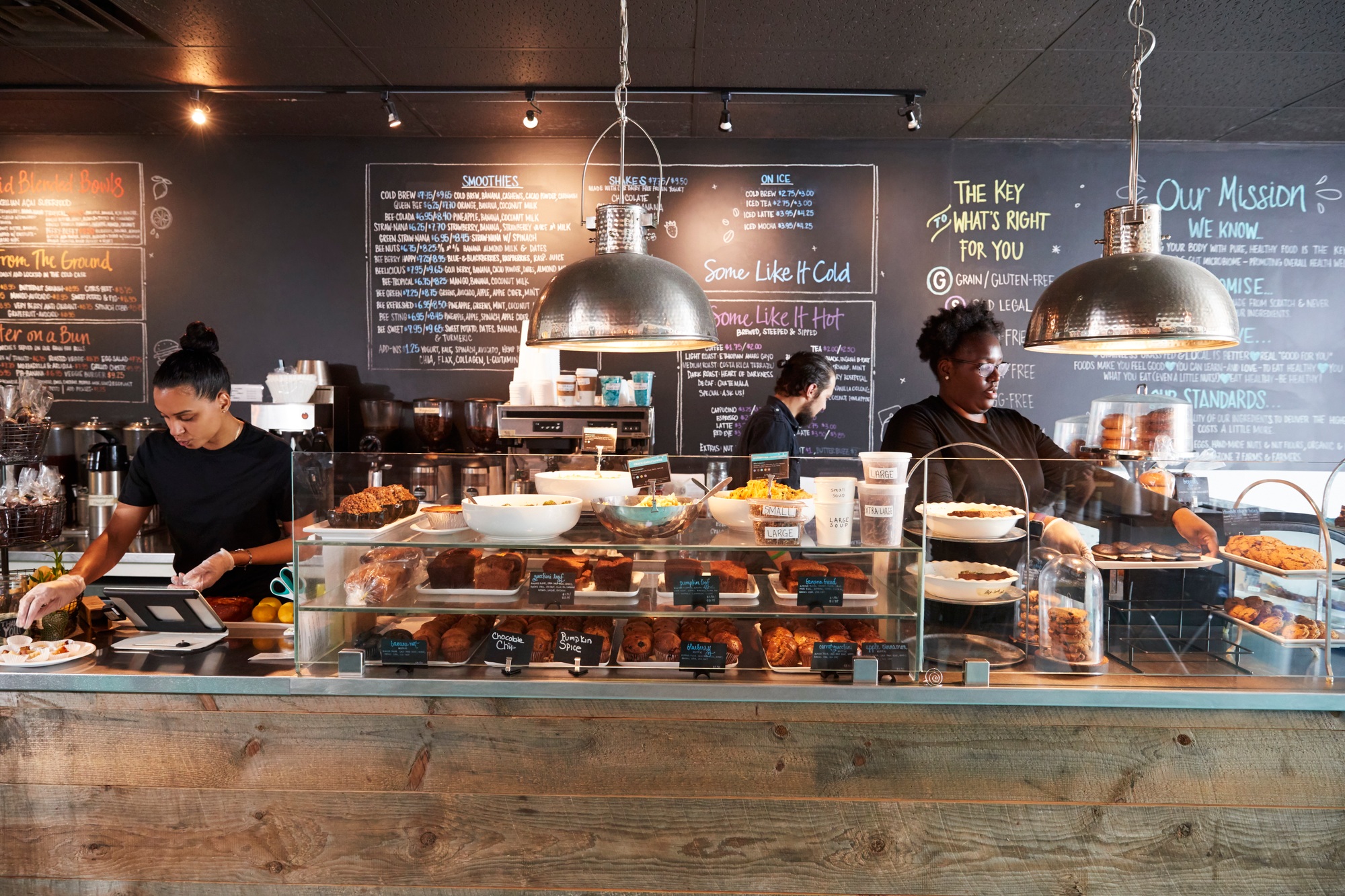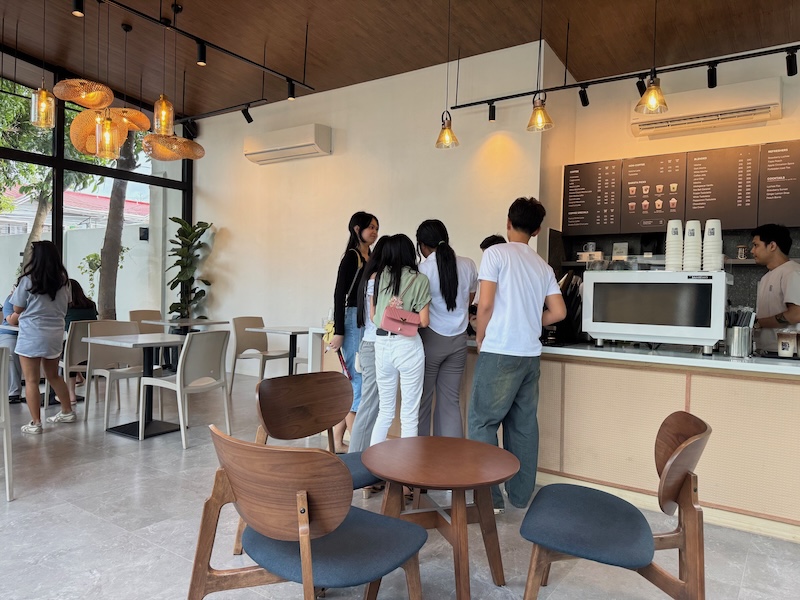The coffee shop industry stands at the cusp of remarkable growth. Combined at-home and out-of-home revenue should reach US$473.10 billion by 2025. This dramatic rise has changed how businesses handle product development and customer experience. Out-of-home revenue from restaurants and bars will reach US$376.70 billion. At-home consumption will contribute US$96.45 billion.
Instagram and TikTok have become powerful forces that spread coffee trends faster. Millennials and Gen Z consumers show strong priorities for environmentally responsible and ethically produced goods. Cold beverages make up 75% of Starbucks’s sales in the U.S.. This shows a major change in how people drink coffee worldwide. Specialty coffee has altered the retail landscape. Functional coffees with adaptogens, probiotics, and collagen have gained popularity because of their health benefits.
This complete analysis is about how technology disrupts coffee production and consumption. It explains why global coffee prices continue to rise and how the coffee shop industry adapts to climate change challenges while adopting innovation. Coffee shop owners and investors must learn about these emerging trends to capture market opportunities in this changing digital world.

Global Market Outlook for Coffee Shops in 2025
The coffee shop market continues to expand strongly in global markets as we head into 2025. The global coffee market stands at USD 269.27 billion in 2024. Market experts expect this number to reach USD 369.46 billion by 2030. This growth translates to a compound annual growth rate (CAGR) of 5.3% during this period.
Rising market value and growth projections
Coffee shop chains lead the market growth. U.S. coffee chain sales grew 8% compared to last year and reached USD 49.8 billion. The total global revenue from coffee consumed at home and outside will likely reach USD 473 billion in 2025. Europe leads the global coffee market in 2024. North America follows with a 24.68% market share.
Coffee shops adapt to economic challenges through state-of-the-art solutions and strategic growth. Starbucks opened 500 new locations in 2023. The U.S. now has more than 40,000 coffee shops. This number shows a 7% increase from pre-pandemic levels.
Emerging regions driving demand
The Asia Pacific region shows the most promise for coffee shop growth. Experts predict it will grow faster than other regions with a CAGR of 6.2% between 2025 and 2034. Several key factors drive this growth:
- Young people have more money to spend
- Traditional tea drinkers now embrace coffee culture
- Cities create demand for Western-style coffee shops
- Big coffee chains expand into new markets
The Middle East and North Africa (MENA) coffee shop market looks impressive too. The region will have over 16,460 stores by November 2029. This represents a CAGR of more than 8%. Latin America’s specialty coffee market generated USD 11.8 billion in revenue in 2023. This market should grow at 7.7% CAGR through 2030.
Market size of coffee shops in the Philippines
The Philippines emerges as a faster-growing coffee market in Asia Pacific. Market research shows the country’s coffee market will reach PHP 78.39 billion by 2025. This growth rate stands at 13.74% compared to 2015 values.
Filipino coffee consumption patterns change faster. The pandemic caused a temporary drop, but average consumption should bounce back to 3.78kg per person by 2025. The market should grow at 7.2% CAGR between 2025 and 2034. This growth comes from people’s increased interest in specialty coffee and the expansion of local and international café chains.
Changing Consumer Preferences and Behaviors
Young people are changing the coffee market faster than ever. Their buying habits and taste choices are reshaping how we drink coffee.
Gen Z and Millennial coffee habits
People start drinking coffee much earlier now. Gen Z typically starts at age 15, while older generations waited until 18-20. Young coffee drinkers have developed refined tastes early in life. Cold drinks dominate Starbucks’ sales, making up 74% of their beverage orders.
Young consumers are changing specialty coffee culture. Millennials (born 1981-1996) led the specialty coffee movement with 62% drinking coffee daily. Gen Z (born 1997-2012) expands the industry toward creative, customizable drinks despite their lower 47% daily consumption rate.
Rise of convenience and digital ordering
Digital tools have become essential to coffee shops, especially for younger customers. About 73% of Gen Z coffee drinkers used mobile apps to order in the last three months. Their need for quick service shows up everywhere:
- Small coffee shops now offer pre-ordering
- You’ll find touch-screen kiosks and quick pickup spots everywhere
- Almost all customers (97%) walk away from inconvenient purchases
Coffee shops now invest in tech to streamline orders without sacrificing quality. The convenience services industry, including coffee, will reach PHP 2,357.50 billion by 2028.
Coffee rituals and personalization trends
Coffee drinkers want their drinks tailored just right. At Starbucks, 25% of custom drinks have three or more changes. This matches what we know about Gen Z – 45% of them value drink customization highly.
Coffee drinking has evolved beyond the morning wake-up call. Hot coffee remains a morning drink, but people enjoy cold coffee as an afternoon treat rather than just a caffeine boost. Coffee isn’t just a drink anymore – it’s become a lifestyle statement.
Innovation and Sustainability in Coffee Offerings
The coffee shop world is changing faster as wellness-focused products and environmentally responsible practices shape product development. These changes show how consumers care more about their health and the environmental effects.
Functional and health-oriented coffee products
Health-focused coffee products have gained market success by a lot. The functional RTD (ready-to-drink) wellness sector grows at an impressive annual rate of 8%, which exceeds traditional RTD coffee and tea products. Creative brands now add adaptogens, nootropics, and other functional ingredients that work beyond caffeine. Four Sigmatic’s Think Coffee uses functional mushrooms to boost mental focus, while RYZE mushroom-based coffee blends help improve immunity.
Today’s coffee drinkers want more than just energy. They look for:
- Immunity support
- Stress relief
- Mental clarity
- Gut health improvements
Caffeine reduction and low-acid options
The caffeine-reduced coffee market keeps expanding. Global decaf should reach US 1,700.94 billion by 2030. Natural low-caffeine varieties like Laurina (with about 0.6% caffeine) and Aramosa (around 0.7% caffeine) have become popular despite growing challenges. Half-caff blends mix regular and decaffeinated beans to offer a middle ground for caffeine-conscious consumers.
Low-acid coffee has emerged as a growing segment quickly. People with digestive issues need coffees that reduce acidity by up to 90%. New cultivation techniques and processing methods help keep the flavor while cutting down acidity.
Sustainable sourcing and ethical practices
Climate disruptions threaten coffee production worldwide, making sustainability crucial. Severe droughts affect Arabica and Robusta beans in Brazil and Vietnam. Companies now develop climate-resilient hybrids and invest in regenerative farming. Starbucks’ C.A.F.E. Practices program leads the industry in ethical sourcing. They use over 200 indicators to review farms based on economic, social, and environmental criteria.
Trends in coffee product formats
RTD formats lead innovation, with La Colombe’s Draft Latte offering café-style experiences in handy packaging. These products strike a chord with younger consumers aged 18-34, who want low-sugar options without artificial ingredients. Premium, convenient, and environmentally responsible RTD options match modern consumers’ desire for quality and efficiency.
Challenges and Opportunities for Coffee Shop Brands
Coffee shops today face new challenges and exciting opportunities in a fast-changing market. Success in this competitive industry depends on how well brands understand and adapt to these changes.
Climate change and supply chain disruptions
Climate change poses a serious threat to coffee production. Experts predict worldwide coffee yields will drop and coffee-suitable land will shrink by 2050. Research shows that nearly half of current coffee-growing land could become unusable during this period. The Intergovernmental Panel on Climate Change points out that rising temperatures hit Arabica coffee hard because it doesn’t handle climate change well.
Coffee supply chains struggle with more than just production issues. Frosts, protests, and shipping container shortages have affected global distribution over the last several years. Worker shortages add to these problems. Coffee farms in Colombia report they’re missing about 25% of needed workers during harvest time. Small roasters feel these problems more than others because they can’t negotiate for container space or handle rising shipping costs as easily.
Standing out in a saturated market
The coffee market has become crowded, and brands need ways to stand out. Successful coffee shops use several smart approaches:
- Eco-friendly practices and ethical sourcing
- Mobile apps and loyalty programs that use technology
- Store designs that match local culture
UK coffee drinkers say consistency matters most, with 80% ranking it as their top priority when choosing where to get their coffee.
Tech-driven experiences and automation
Automation changes how coffee shops work by solving staff shortages and keeping quality steady. Smart machines like automated tampers, steam wands, and brewing systems let baristas spend more time with customers instead of making drinks. This technology helps a lot when shops can’t find enough workers. Almost half of all hospitality managers say staff shortages hurt their business.
Expansion of coffee chains and mobile formats
Mobile coffee carts are a big deal right now. This business is worth over PHP 58.94 billion in the United States and should grow 12% each year for the next five years. These portable setups help businesses reach customers anywhere, from office parks to local events.
Big chains keep growing, too. Starbucks shows how to do this right by matching each market’s needs. They build bigger stores in China and add comfortable seating in India to match what locals want.
What’s Next for the Coffee Shop Industry?
The coffee shop industry faces an exciting mix of tradition and breakthroughs as we look at 2025 and beyond. Smart use of new technologies will help brands succeed in growing markets as global expansion continues.
Coffee shops are becoming more than just places to grab a drink. These spaces now serve as workplaces, social spots, and community hubs. Successful businesses will adapt their layouts to meet these needs while staying true to their brand identity.
Artificial intelligence will play a key role in customizing customer experiences. Live analytics tools will spot buying patterns and help tailor offerings before customers know their own priorities. On top of that, blockchain technology will boost supply chain transparency, letting customers track their coffee from farm to cup in complete detail.
The line between coffee shops and other industries keeps getting thinner. Strategic collaborations with fitness centers, tech companies, and wellness brands will become common. These partnerships ended up creating new ways to make money beyond selling drinks.
Environmental sustainability has changed from a marketing plus to a must-have business practice. Carbon-neutral operations, zero-waste programs, and earth-friendly farming will become standard practice rather than special features.
Climate challenges have made hybrid varieties and coffee alternatives more popular. Customers will tuck into drinks made from chicory, dandelion root, and roasted grains along with their regular coffee.
Whatever tech advances come our way, human connection remains the heart of this industry. Coffee shops that balance smart automation with a genuine human touch will build the strongest customer loyalty in this changing market.
FAQs
Q1. What are the major trends shaping the coffee shop industry in 2025? The coffee shop industry in 2025 is embracing health-conscious offerings, including superfood lattes with turmeric, matcha, and adaptogenic mushrooms. There’s also a focus on sustainability, personalization, and tech-driven experiences, with cold beverages and functional coffee products gaining popularity.
Q2. How is the global coffee market expected to grow by 2025? The global coffee market is projected to reach approximately $473 billion by 2025, with a compound annual growth rate (CAGR) of 5.5% from 2020 to 2025. This growth is driven by increasing coffee consumption, especially in emerging markets, and the rising popularity of specialty coffee.
Q3. What challenges are coffee shops facing in the coming years? Coffee shops are grappling with climate change impacts on coffee production, supply chain disruptions, and the need to stand out in a saturated market. They’re also adapting to changing consumer preferences, integrating new technologies, and addressing sustainability concerns.
Q4. How are consumer preferences changing in the coffee industry? Consumers, especially younger generations, are showing a preference for customizable drinks, cold beverages, and convenient ordering methods through mobile apps. There’s also a growing demand for sustainable and ethically sourced coffee, as well as functional and health-oriented coffee products.
Q5. What role is technology playing in the future of coffee shops? Technology is revolutionizing the coffee shop experience through digital ordering systems, automated brewing equipment, and AI-driven personalization. Mobile coffee formats are gaining popularity, and blockchain technology is being used to enhance supply chain transparency. These innovations are helping coffee shops improve efficiency and customer experience.
Be Part of Coffee’s Next Big Chapter
See where the future of coffee is headed—experience trend-driven brews, innovative blends, and warm community vibes at Big’s Coffee.
Visit us today



